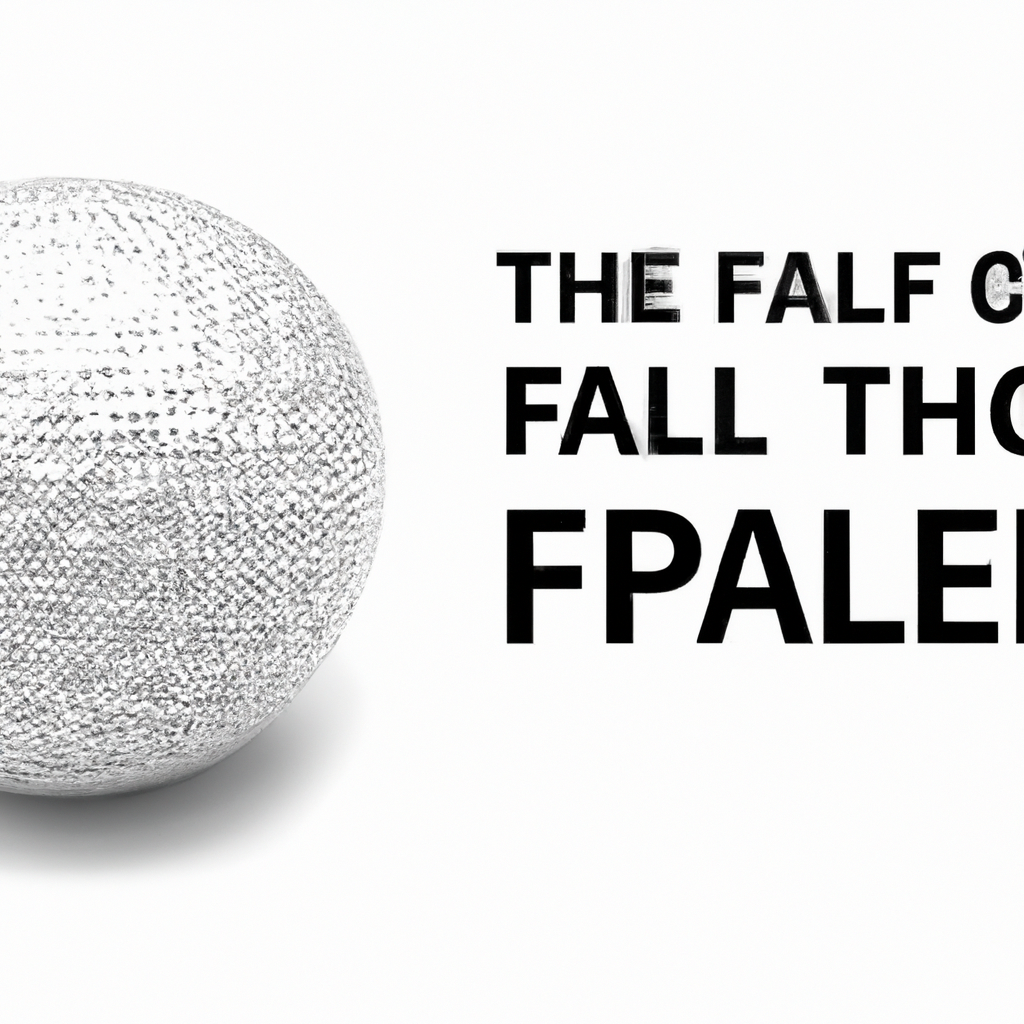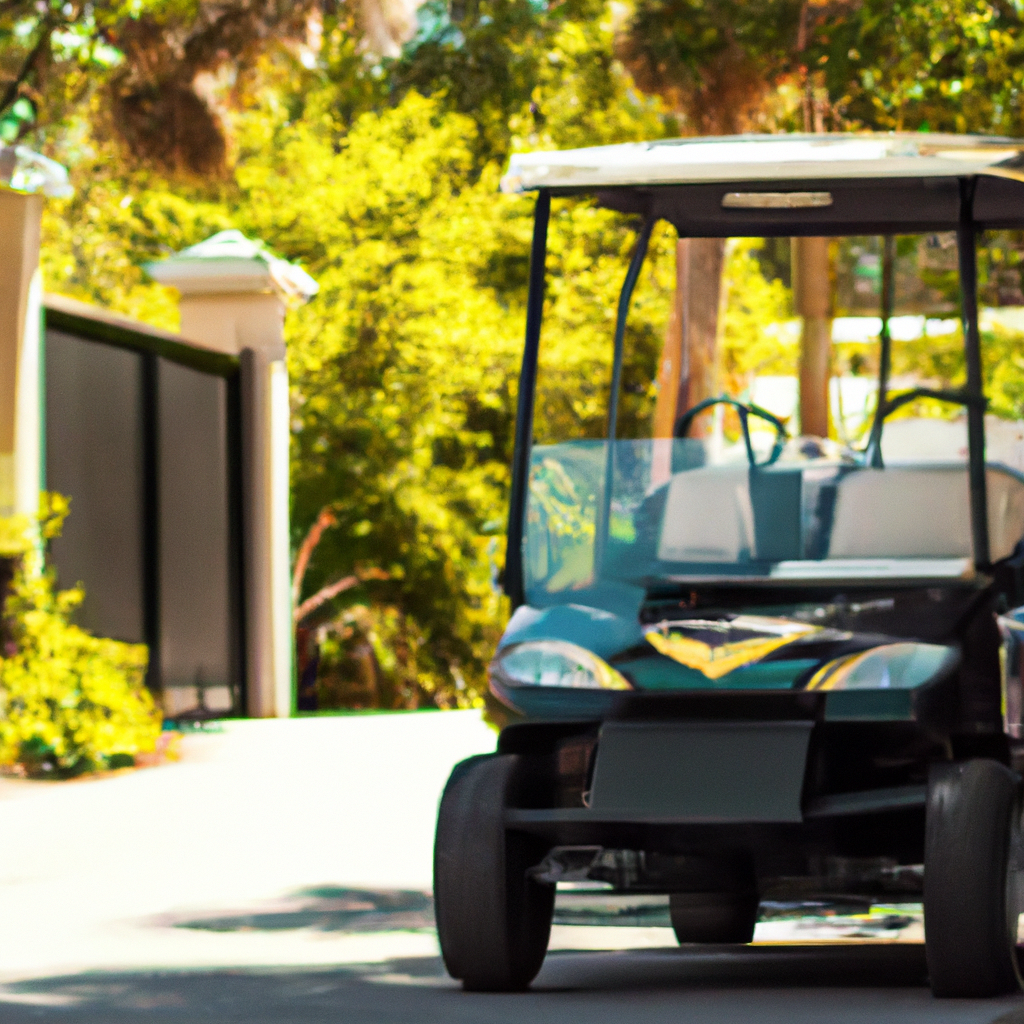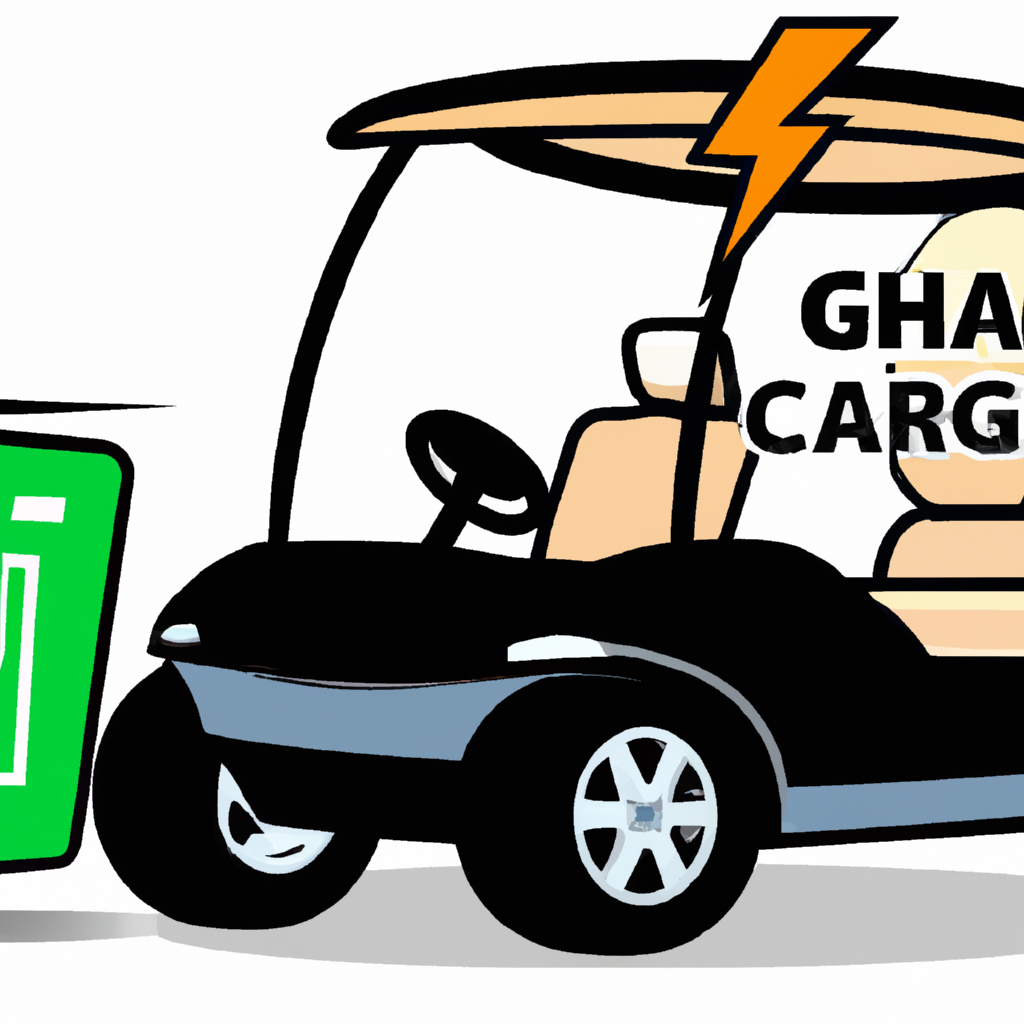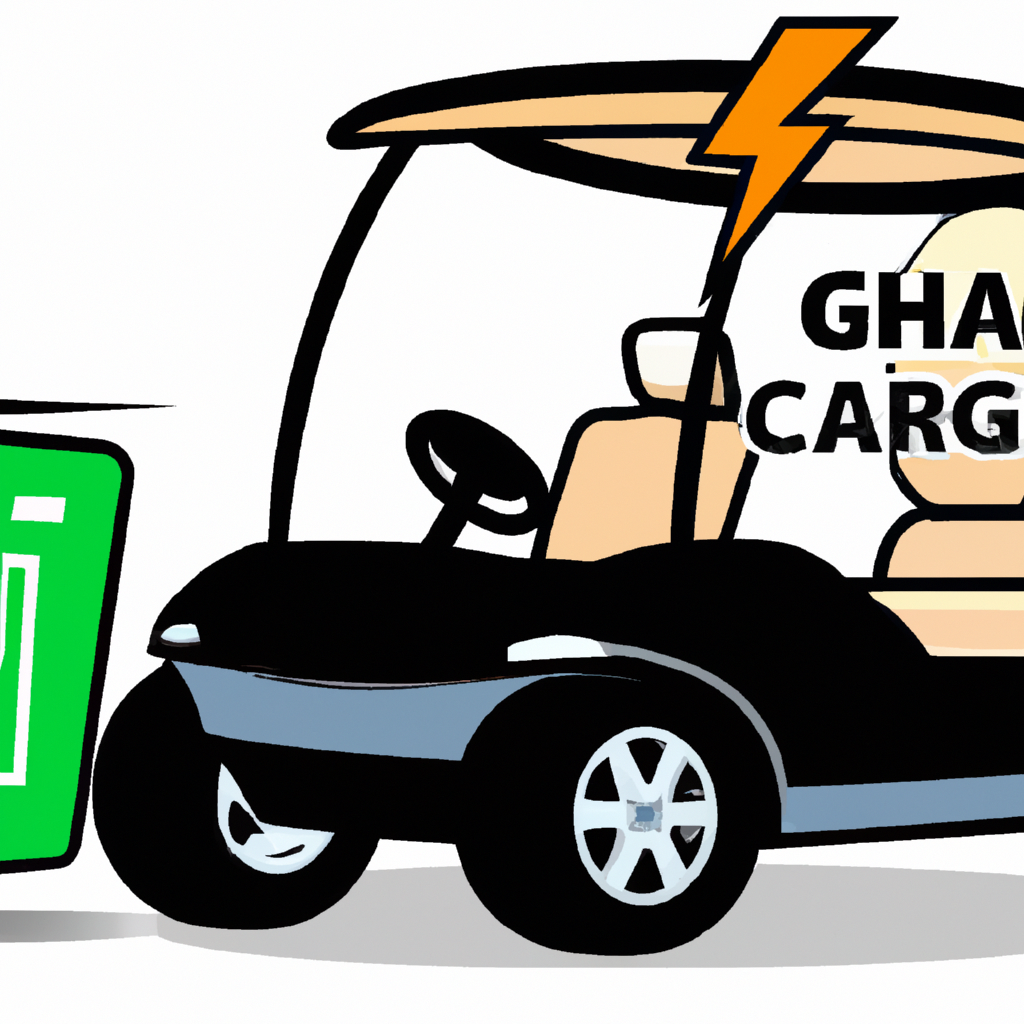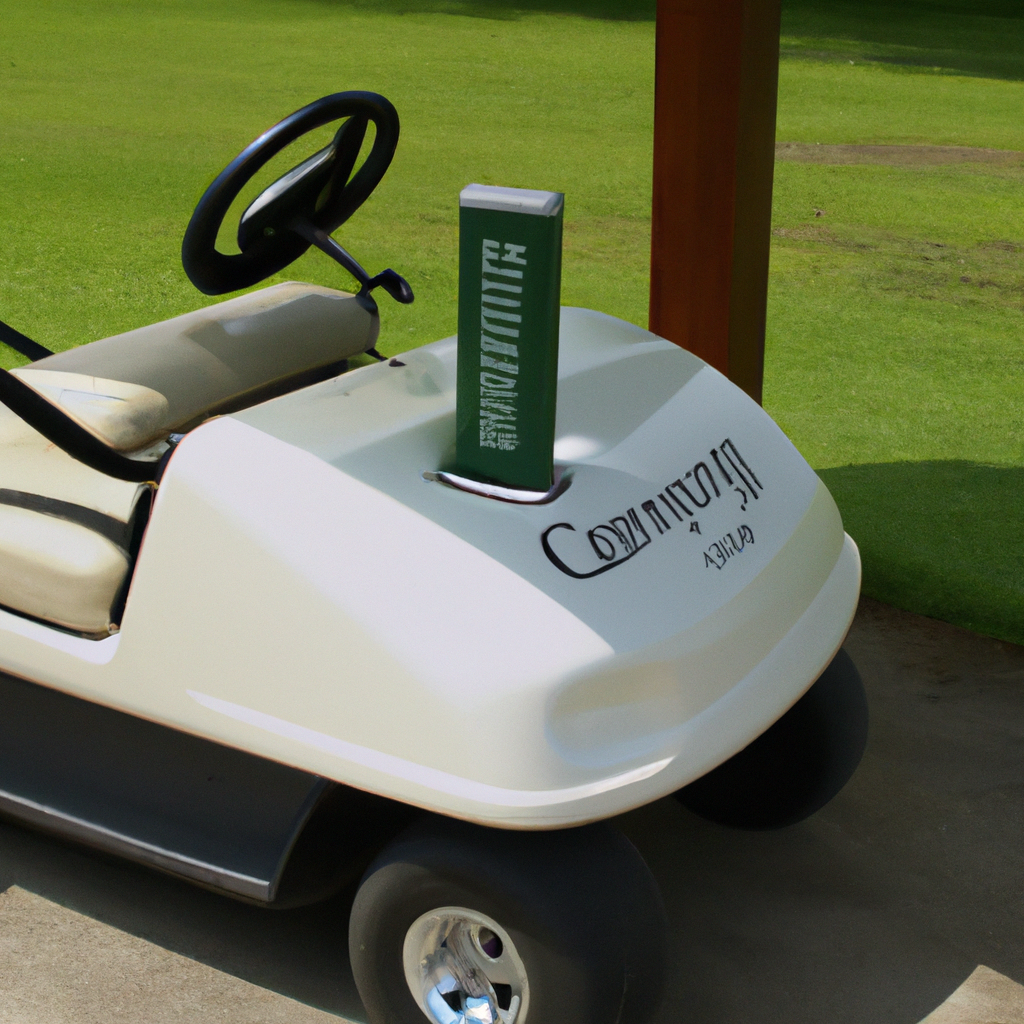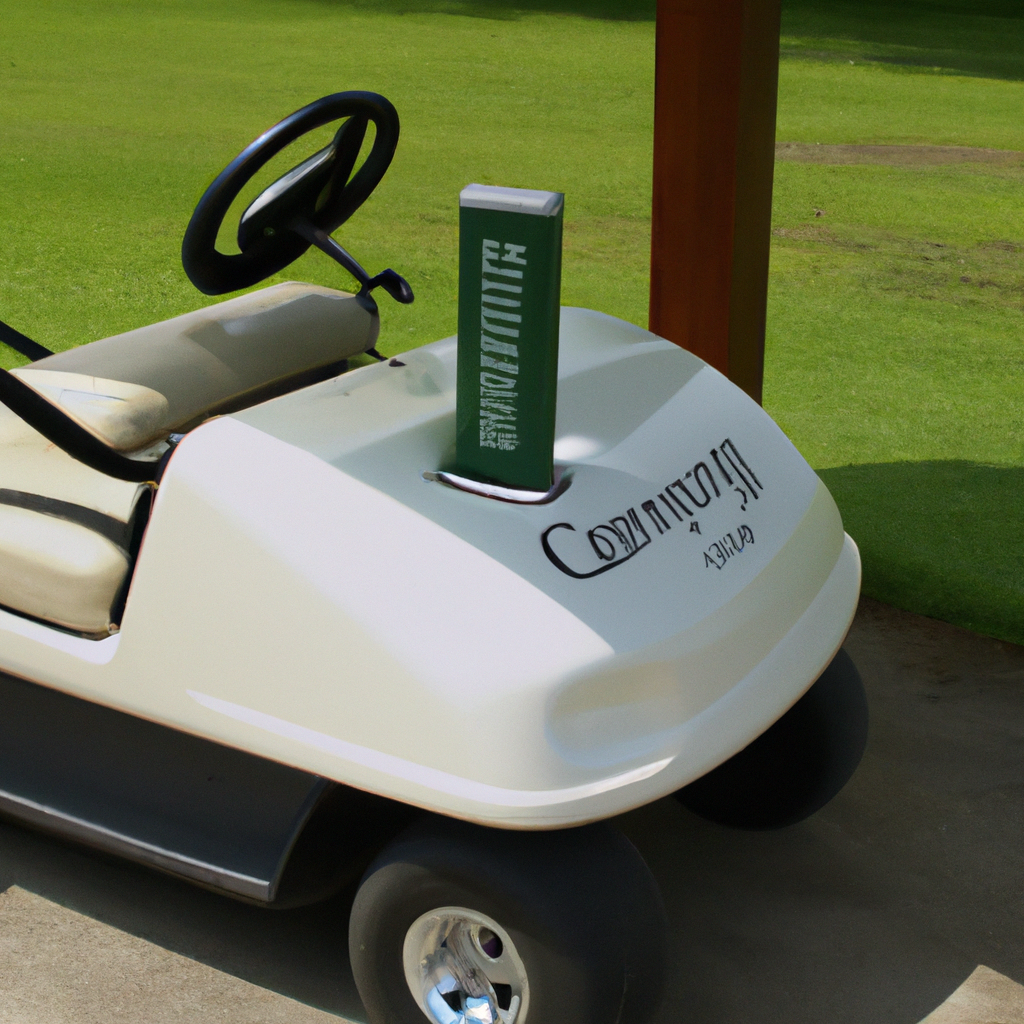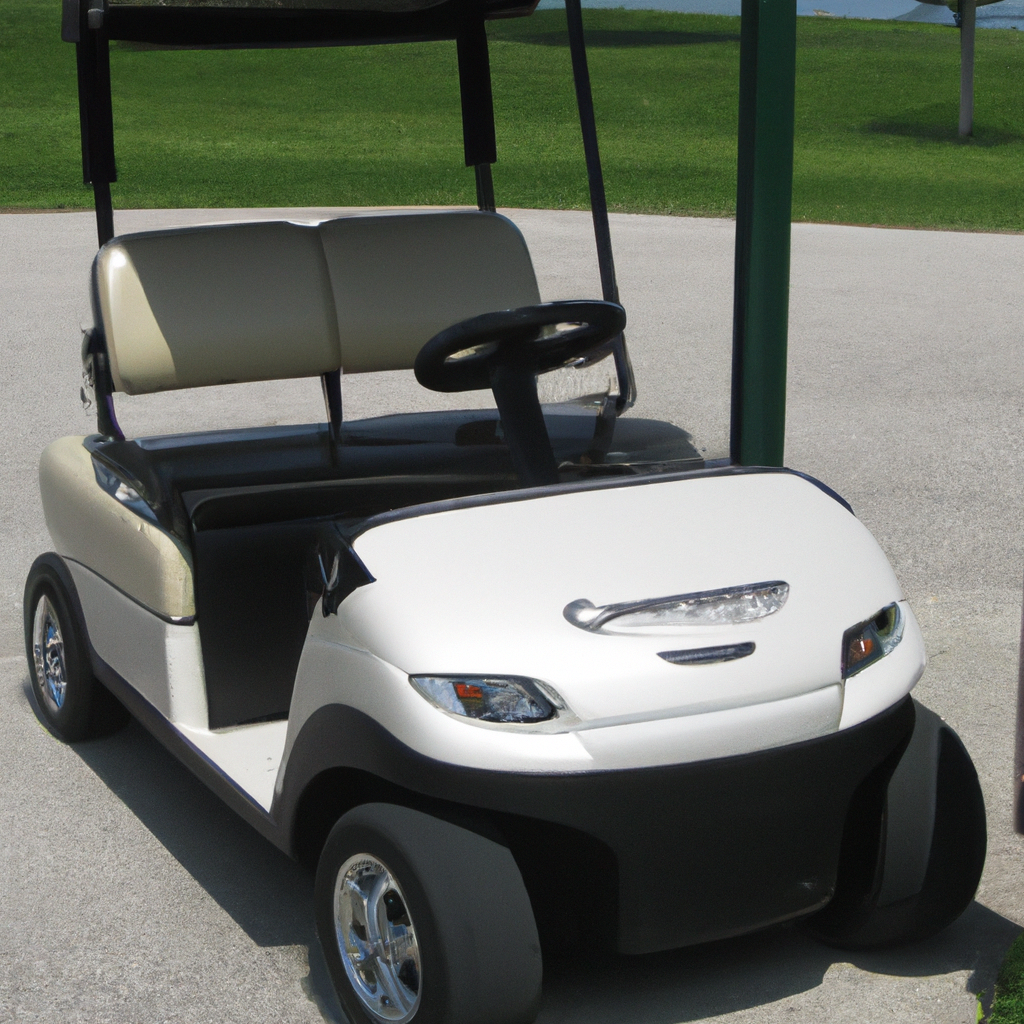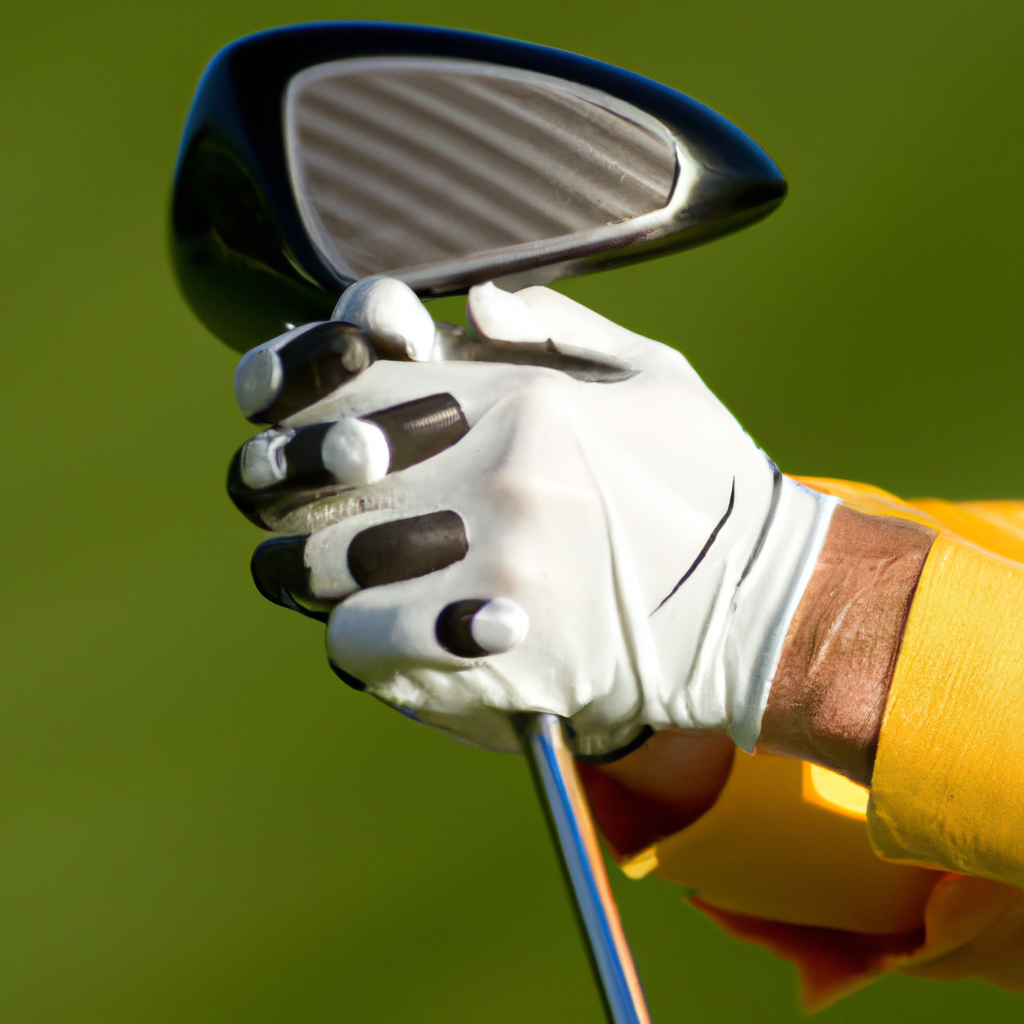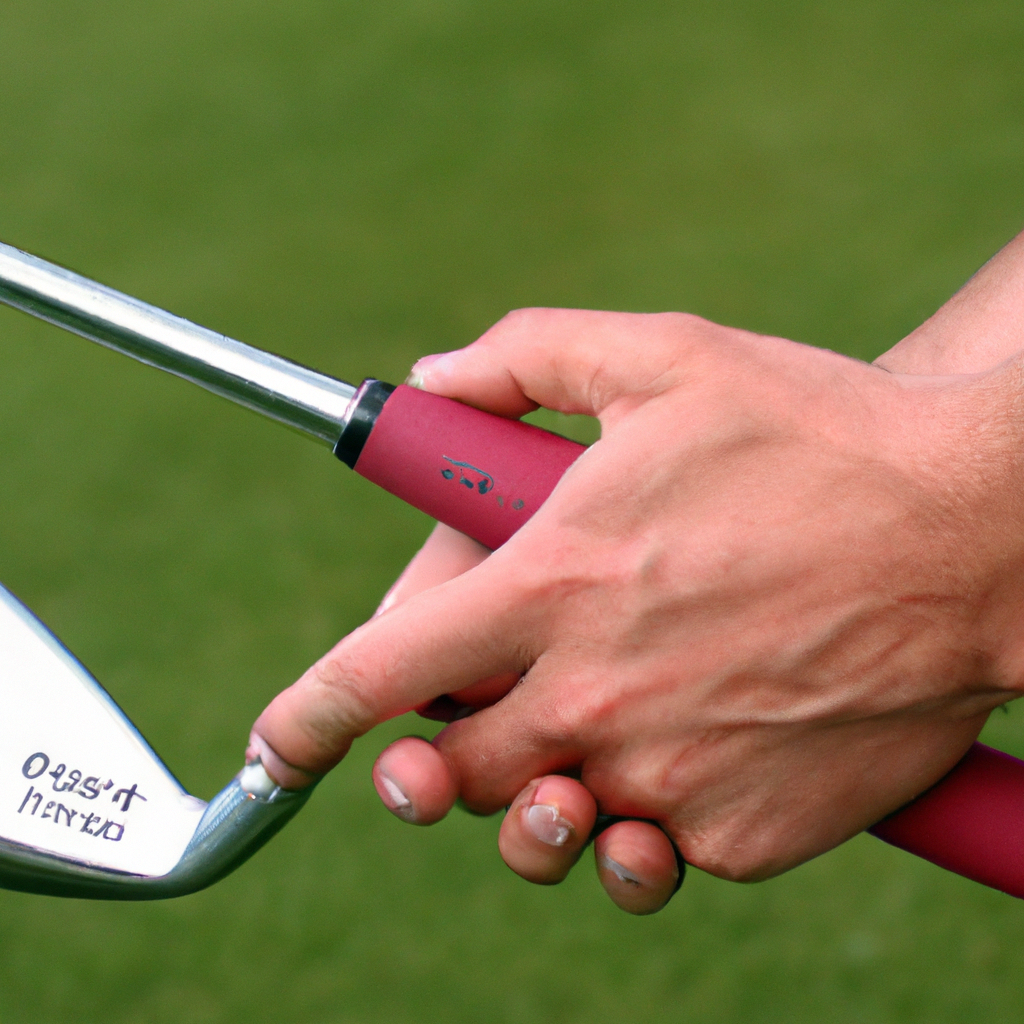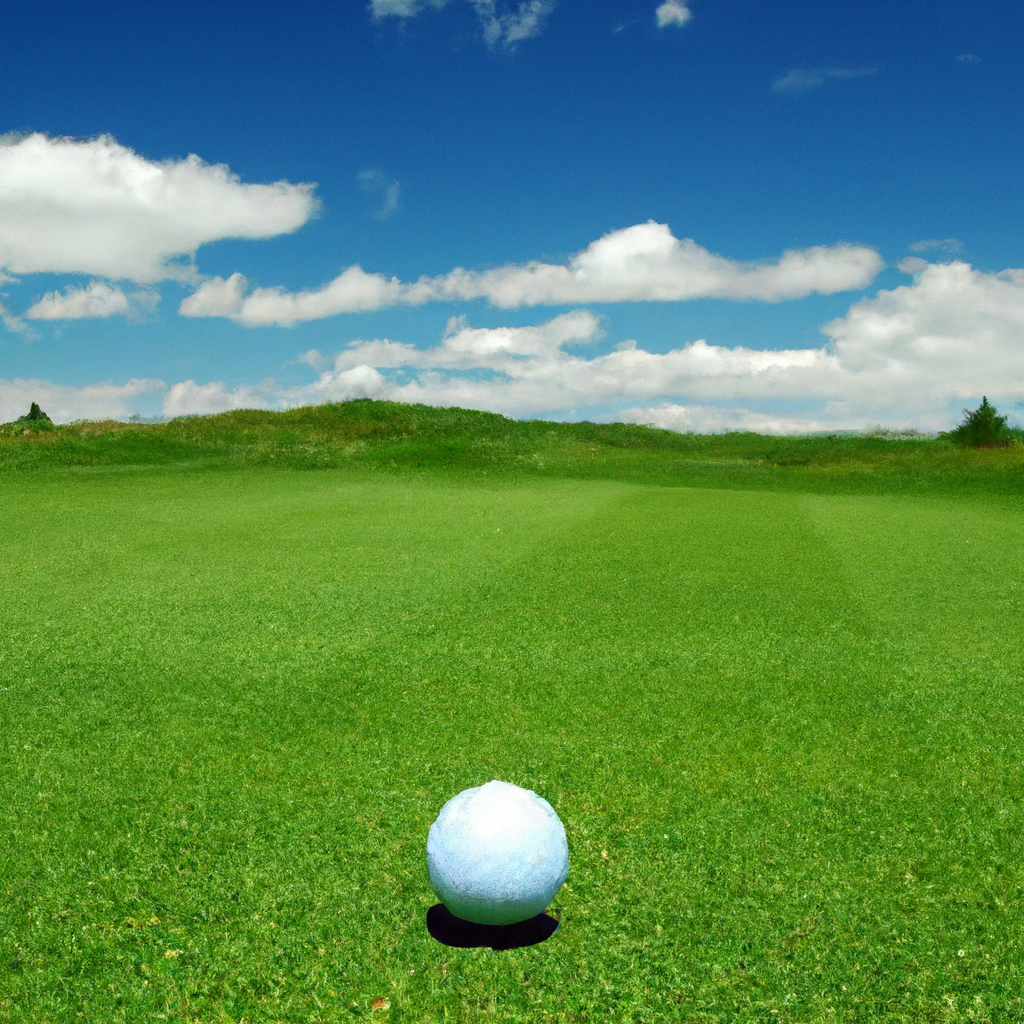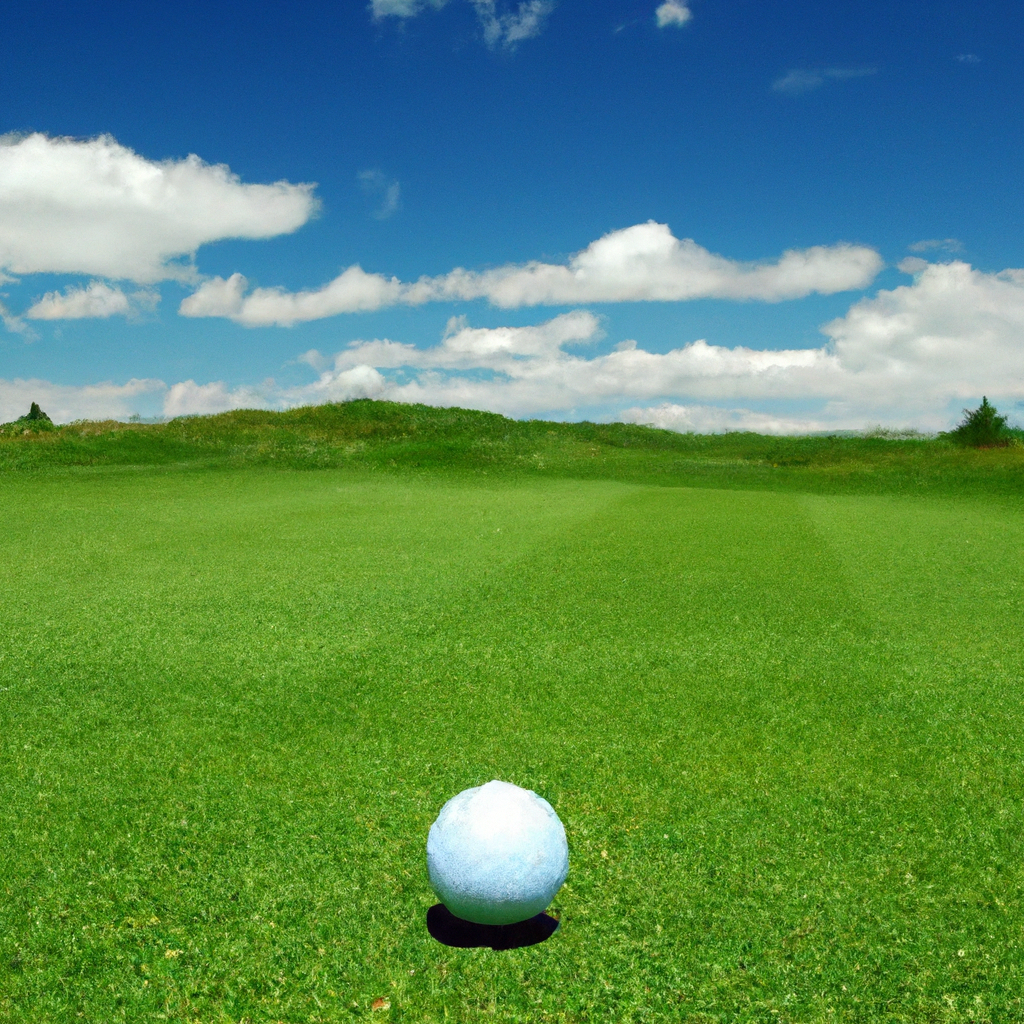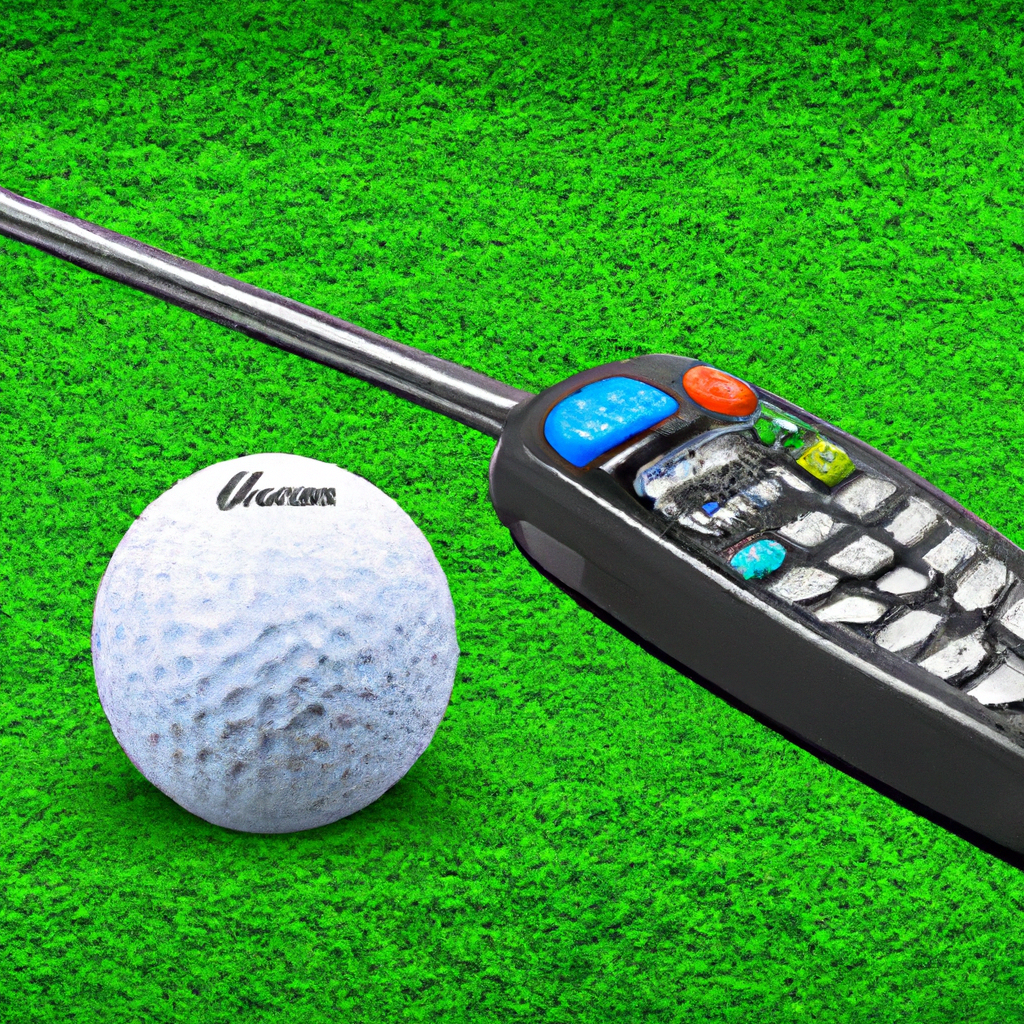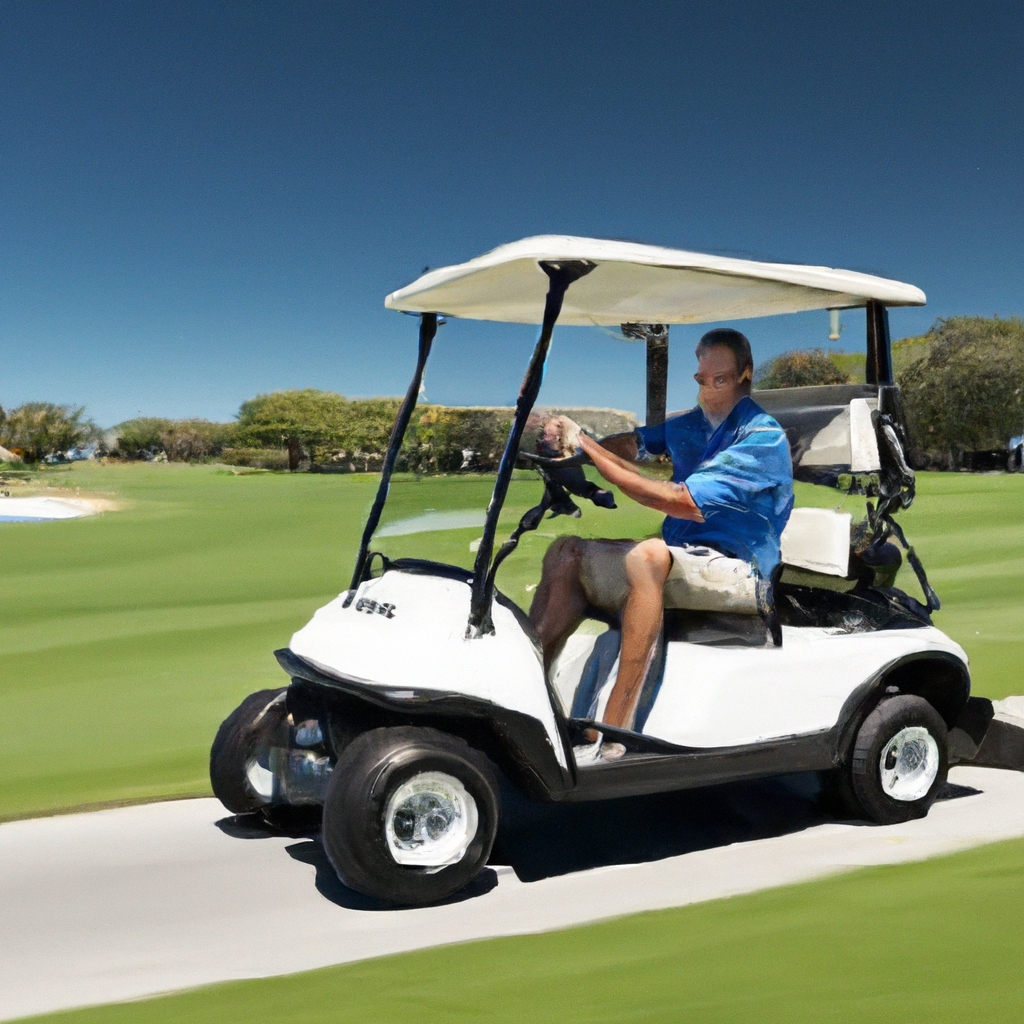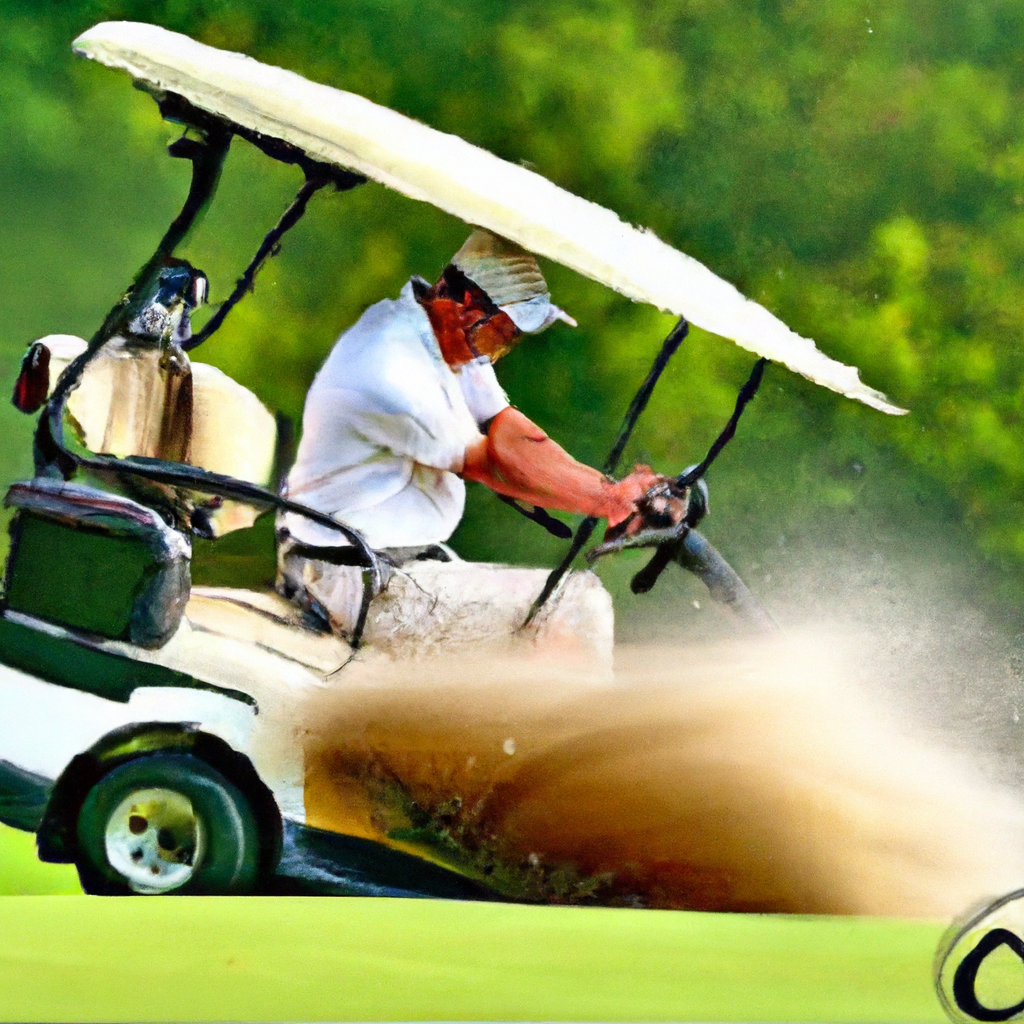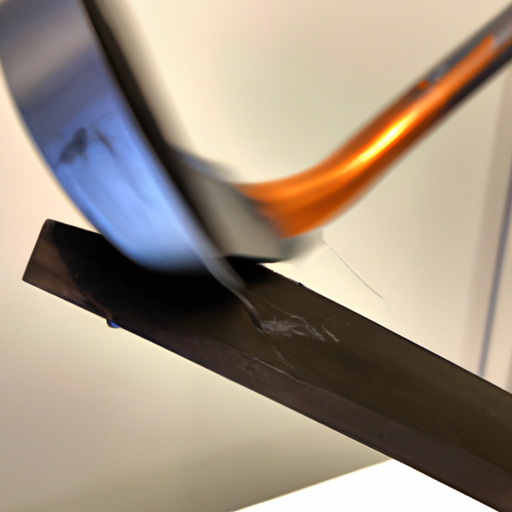Imagine being able to practice your swing and perfect your golf game without ever stepping foot on a golf course. With the growing popularity of golf simulators, more and more golf enthusiasts are transforming their homes into virtual fairways. However, to ensure an optimal gaming experience, one crucial factor to consider is the ceiling height. In this article, we will explore the ideal ceiling height for a golf simulator, providing you with the knowledge you need to create your own golf oasis at home. So, grab your clubs and get ready to tee off in the comfort of your own living room!

Factors to Consider
Space Constraints
When setting up a golf simulator, one of the first factors to consider is the available space. The size of the room or area in which you plan to install the simulator will directly impact the ceiling height required. It is important to measure the dimensions of the space accurately to determine if it can accommodate the simulator and allow for comfortable movement during swings. Additionally, consider the leeway required for swinging the club without hitting any walls or obstructions. This will ensure a safe and enjoyable experience.
Type of Simulator
Another crucial factor to consider is the type of simulator you are using. Different simulators have varying specifications and may require specific ceiling heights. There are three main types to choose from: fixed simulators, portable simulators, and projection-based simulators. Each has its advantages and requirements. Fixed simulators are permanently installed systems that typically require more headroom due to their overall structure. Portable simulators, on the other hand, are more flexible in terms of space requirements but may still need sufficient room for clearance. Projection-based simulators utilize projectors to display the virtual golf course, and these also have specific height recommendations that should be considered.
Golfer’s Height
The height of the golfer is an important consideration when determining the appropriate ceiling height for a golf simulator. Taller golfers will naturally require more room to comfortably swing the club without feeling restricted. On the other hand, shorter golfers may be able to manage with a lower ceiling height. It is essential to take accurate measurements of the golfer’s height to ensure a suitable ceiling clearance that allows for unrestricted swings.
Swing Height
The swing height refers to the highest point a golfer’s club reaches during a swing. It is crucial to measure this height accurately, taking into account the golfer’s height and swing technique. The swing plane also plays a role in determining the necessary ceiling height, as a more upright swing will require more space overhead. Careful measurement and consideration of the swing height will help determine the minimum clearance required for a safe and effective golf simulator setup.
Club Length
The length of the clubs used by the golfer must also be taken into account when calculating the ceiling height required for a simulator. Longer clubs, such as drivers or fairway woods, will require more space overhead due to their extended length. It is essential to measure the length of the longest club that will be used and ensure that there is sufficient clearance during the swing. This consideration becomes even more important for golfers with longer-than-average clubs or those who use specialty clubs that require additional space.
Recommended Ceiling Heights
Minimum Height
The minimum ceiling height recommended for a golf simulator depends on various factors, including the type of simulator, golfer’s height, swing height, and club length. However, as a general guideline, a minimum height of 8 to 9 feet (2.4 to 2.7 meters) is often recommended to allow for basic swings with most simulators. This height provides enough clearance to avoid collisions with the ceiling or light fixtures. However, it is essential to keep in mind that taller golfers or those with longer clubs may require more ceiling clearance to swing comfortably.
Ideal Height
For an optimal golf simulator experience, an ideal ceiling height of around 10 to 12 feet (3 to 3.6 meters) is recommended. This height allows for unrestricted swings for the majority of golfers, regardless of their height or club length. With this height, golfers can confidently swing without worrying about hitting the ceiling or feeling cramped during their follow-through. Additionally, the increased vertical space enables a more immersive experience and reduces the risk of visual distractions from the projected image.
Maximum Height
While there is no strict maximum ceiling height for a golf simulator, extremely high ceilings may impact the overall realism and immersion during gameplay. Excessive vertical space can result in diminished ball flight feedback, as the projection distance may become too long, affecting accuracy. However, if the golf simulator uses high-quality projection technology and has adjustable settings, it is still possible to achieve an immersive experience in rooms with very high ceilings. The key is to strike a balance between ceiling height and maintaining a realistic and enjoyable golfing experience.
Space Constraints
Measurement of Available Space
To determine the adequate ceiling height for a golf simulator, it is crucial to measure the available space accurately. Take measurements of the room’s width, length, and height to have a clear understanding of the dimensions. This will help in selecting the right simulator that fits within the available space and ensure there is sufficient clearance for swinging without any obstructions.
Leeway for Swinging
When measuring the available space, it is important to consider the leeway required for swinging the club comfortably. Ensure that there is ample room for the golfer to execute a full swing without hitting any walls, furniture, or other objects. Having additional space along the sides and behind the golfer’s stance will allow for a more relaxed swing, enhancing the overall experience and reducing the risk of accidents or damage to the surroundings.
Installation Area
Consideration should also be given to the installation area itself. The surrounding walls and proximity to other objects, such as windows, doors, or cabinets, can affect the overall usability of the simulator. Ideally, choose an area with minimal obstructions that allows for unrestricted movement while swinging. This will enhance the accuracy of the simulator’s tracking system and prevent any potential damage to the surroundings.

Type of Simulator
Fixed Simulator
A fixed simulator is a permanent installation, typically featuring a dedicated room or enclosure. These simulators often have a more substantial structure and require a higher ceiling height due to overhead framework, swing nets, and other equipment. The recommended ceiling height for a fixed simulator ranges from 10 to 12 feet (3 to 3.6 meters). The advantage of a fixed simulator lies in its stability and the ability to create a dedicated golfing environment with customized lighting, flooring, and sound systems.
Portable Simulator
Portable simulators offer more flexibility in terms of space requirements. These systems can be set up in various locations, making them suitable for locations with lower ceiling heights. However, it is still essential to ensure that there is sufficient clearance for swinging comfortably. The recommended ceiling height for a portable simulator is similar to that of a fixed simulator, around 10 to 12 feet (3 to 3.6 meters), to accommodate golfers of different heights and swing techniques.
Projection-based Simulator
Projection-based simulators rely on projecting a virtual golf course onto a screen or impact canvas. These systems often have specific height recommendations due to the projection distance required to create an immersive experience. For projection-based simulators, a ceiling height of 10 to 12 feet (3 to 3.6 meters) is recommended to avoid any distortions in the projected image and provide enough overhead clearance for comfortable swings.
Golfer’s Height
Measurements
To determine the suitable ceiling height for a golfer, it is important to measure their height accurately. Stand the golfer upright and measure from the top of their head to the ground. This measurement will provide a baseline for determining the minimum clearance required for their swings. Taking precise golfer measurements will ensure a safe and enjoyable experience without any risk of collisions with the ceiling or light fixtures.
Consideration for Tall Golfers
Tall golfers often require more ceiling clearance to accommodate their height during swings. If you are taller than average, it is advisable to add a few inches to the minimum ceiling height recommendation to ensure unrestricted swings. This will allow you to perform your swings comfortably without feeling cramped or worrying about unintentional collisions. Consider your swing height and reach when determining the appropriate ceiling clearance for your simulator setup.
Consideration for Short Golfers
Short golfers may have the advantage of requiring slightly less ceiling clearance due to their height. While the minimum ceiling height recommendations should still be followed, shorter golfers may find that a lower height range works well for them. However, it is important not to compromise on safety and comfort. Measure your swing height carefully to determine the appropriate ceiling clearance and ensure unimpeded swings.
Swing Height
Measurement of Swing Height
Determining the swing height is crucial to accurately calculate the needed ceiling clearance. To measure the swing height, take into account the golfer’s height, swing technique, and any potential extension of the arms during the swing. By analyzing the trajectory of the swing, you can identify the highest point reached by the club and ensure that the ceiling height allows for unrestricted movement throughout the entire swing process.
Swing Plane
The swing plane plays a role in determining the ceiling height required for a golf simulator. Different swing planes, such as upright or flatter swings, will impact the amount of vertical space needed. An upright swing plane, which reaches higher during the swing, will require more overhead clearance compared to a flatter swing plane. Consider the golfer’s swing style when calculating the ceiling height to ensure there is sufficient space overhead, irrespective of the swing plane.
Club Length
Measurement of Club Length
To accurately calculate the required ceiling height for a golf simulator, it is necessary to measure the length of the clubs that will be used. The longest club, typically the driver, should be measured from the grip to the front face of the clubhead. This measurement will help determine the additional clearance needed to accommodate the extended length of the clubs during swings. Consider both the standard club length and any additional specialty clubs used.
Consideration for Longer Clubs
Golfers using clubs longer than average will require more ceiling clearance. Drivers, fairway woods, and specialty clubs often have longer shafts, increasing the potential risk of hitting the ceiling during the swing. To ensure unrestricted swings, additional vertical space should be factored into the overall ceiling height calculations. By considering the length of the clubs used, you can create a safe and comfortable environment that allows for proper swing execution.
Effects of Ceiling Height
Visual Distractions
The ceiling height directly affects the overall experience and immersion in a golf simulator. A ceiling that is too low or too close to the golfer can become a visual distraction, especially when projecting the virtual golf course. A minimum ceiling height recommendation of 8 to 9 feet (2.4 to 2.7 meters) helps reduce the risk of distractions caused by the projection system or light fixtures. Opting for the ideal ceiling height of 10 to 12 feet (3 to 3.6 meters) enhances the realism and ensures a clear view of the virtual golf course, enhancing the overall enjoyment of the simulation.
Ball Flight Interference
Insufficient ceiling clearance can result in interference with the ball’s flight path during a swing. If the golfer’s club hits the ceiling or comes close to doing so, it can affect the natural trajectory of the ball. Higher ceilings provide more vertical space for unimpeded swings, reducing the chances of interference or disruption to the flight of the ball. This is especially important when using the simulator for practice or honing skills, as accurate ball flight feedback is essential for improvement.
Comfort and Confidence
Having ample ceiling clearance creates a comfortable and confident environment for golfers. With sufficient space overhead, golfers can focus on their swing technique without worrying about hitting the ceiling or feeling restricted. This freedom of movement allows for a more natural swing motion, leading to increased comfort and improved performance. A golf simulator setup with the right ceiling height cultivates an environment that fosters both physical and mental well-being during gameplay.
Installation and Setup
Ceiling Materials
When setting up a golf simulator, consider the type of materials used for the ceiling. Softer materials, such as acoustic ceiling tiles, may provide some level of protection if the golfer’s club accidentally comes into contact with the ceiling. However, it is always best to maintain proper clearance to avoid any damage to the ceiling or surrounding structures. Ensure that the chosen ceiling materials are durable and can withstand the potential impact of club strikes.
Support Structures
The ceiling and support structures play a crucial role in the stability and safety of the golf simulator setup. Proper support must be in place to bear the weight of the simulator components, such as screens, projectors, nets, and lighting fixtures. Consult with professionals to ensure that the ceiling and support structures meet necessary safety standards. Reinforcements or additional bracing may be required to handle the setup’s weight and minimize any potential risks.
Safety Precautions
Safety should always be a top priority when setting up a golf simulator. Regularly inspect the ceiling, support structures, and overall installation to identify any potential hazards. Ensure that the simulator is securely anchored and that all components are properly mounted. Familiarize yourself with safety guidelines provided by the simulator manufacturer and take appropriate precautions, such as using safety nets or impact-proofing measures, to protect the surroundings and prevent accidents.
Additional Considerations
Lighting
Proper lighting is essential for a golf simulator setup. Ensure that the lighting is evenly distributed throughout the space, minimizing glare and shadows on the screen or projected image. Consider installing dimmable lights to create the appropriate ambiance for a realistic golfing experience. Additionally, position the lighting fixtures in a way that avoids direct contact with the golfer’s swing path to prevent any potential disruptions or distractions during gameplay.
Ventilation
Installing a golf simulator can create heat and humidity within the enclosed space, which may impact comfort and performance. Adequate ventilation should be considered to maintain a pleasant environment. This can be achieved through the use of fans, air conditioning, or ensuring that windows or doors can be opened to allow for natural airflow. Proper ventilation enhances the overall experience and prevents discomfort or fatigue during extended gameplay.
Ground Surface
The ground surface beneath the golfer’s feet is another important consideration. It is recommended to have a stable and level surface to prevent any tripping hazards or compromised balance during the swings. Ensure that the surface provides good traction to avoid slipping or sliding, as this can negatively impact the golfer’s performance and safety. Consider using materials such as rubber mats, synthetic turf, or carpeting designed for indoor golfing setups to provide a suitable and safe surface for the golfer.
In conclusion, determining the appropriate ceiling height for a golf simulator depends on several factors such as space constraints, type of simulator, golfer’s height, swing height, and club length. By carefully considering these factors and taking accurate measurements, you can create a safe and enjoyable environment for practicing your golf game. Remember to prioritize safety, comfort, and realism when setting up your golf simulator, and consult professionals if needed to ensure a proper installation. Happy golfing!


